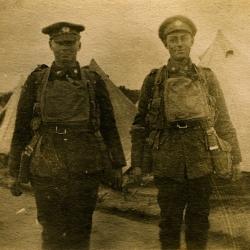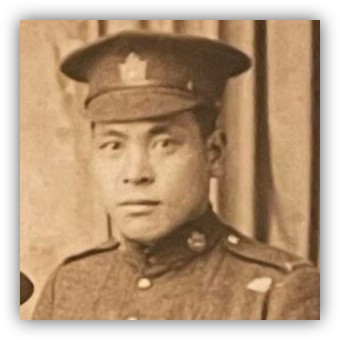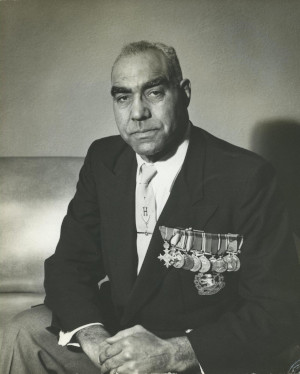The early 20th century was a time of severe persecution for 2SLGBTQ+ individuals. Homosexuality wasn’t decriminalized until 1969 and same-sex couples hid their affection in public in fear of being jailed or persecuted. For many individuals, it was difficult to speak openly about their experiences, even later in life. This is especially true when dealing with the experiences of 2SLGBTQ+ individuals who served in the First World War.
Besides persecution by other soldiers, 2SLGBTQ+ members of the Canadian Expeditionary Force faced the potential of being charged under the Military Act, sentenced to imprisonment or hard labour, and removed from the expeditionary force altogether. There are very few examples of known same-sex couples in the Canadian Expeditionary Force. One exception to this is the relationship between two soldiers named Len and Cub.
A picture is worth a thousand words
The uncovering of the story of Len and Cub began in 2011, when a group of photographs arrived at the Provincial Archives of New Brunswick. Local historian John Corey purchased the photographs at an estate sale in Havelock. The images belonged to Leonard Keith, who took many of the photographs and was a classmate of Corey’s father Roy. Roy had shared stories with John about Leonard and when he donated the photographs, John noted that some of the images depicted Leonard with his boyfriend. Historians Meredith Batt and Dusty Green became fascinated with the images and began to piece together the story of Len and Cub using many archival sources. Thanks to their work, Len and Cub’s century-old story began to emerge.
Born in 1891, Leonard “Len” Olive Keith was born into a prominent family in Havelock, New Brunswick. His father owned a general store called the Mercantile and Len worked as a driver there. From the time his family bought a camera, Len began to take pictures of the things he loved, including his family, camping trips, and his partner Cub. Joseph Austin “Cub” Coates was born in 1899 to a neighbouring farming family. Len and Cub knew each other from a young age and attended the same school as children. The photographic record suggests that their relationship started some time around 1915. Just like the images taken on our phones today, the century-old photographs show Len and Cub having fun with their friends and enjoying activities together. The pair often took rides in Len’s family’s car and picnicked in the countryside. In some of the photos taken, both Len and Cub also appear with rings on their left hands, which likely symbolized their love for each other.
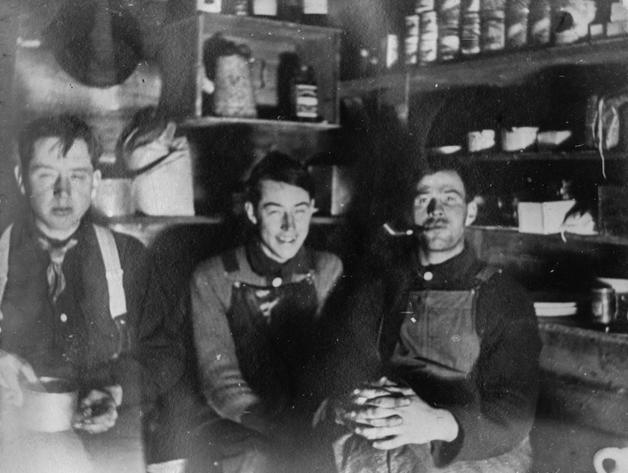

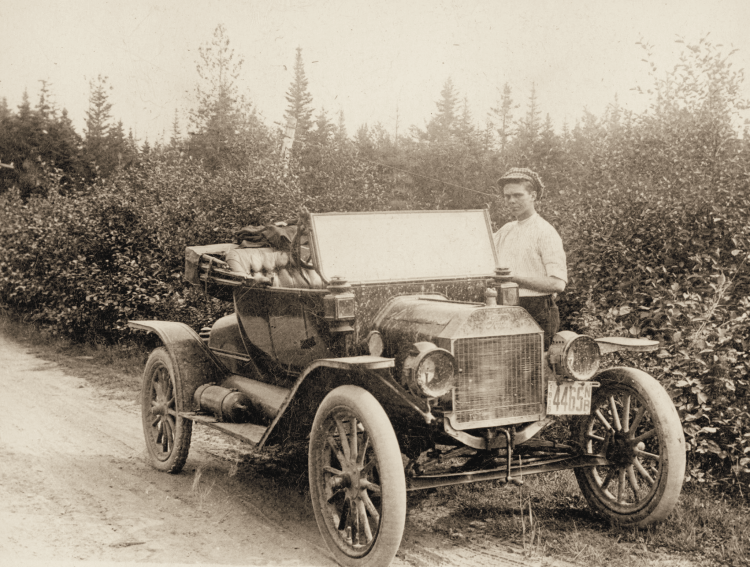
Len and Cub go to war
Like most young men of their generation, the first world war had major impacts on Len and Cub’s lives. Although the early years of the war saw over 300,000 Canadian men enlist voluntarily in the war, by the end of 1916, there was a significant lack of new recruits. On August 29, 1917, the Canadian Government enacted the Military Service Act. The Act ensured that the Government could conscript any Canadian male between 20 and 45 into the Canadian Expeditionary Force. The government granted exemptions to many individuals for various reasons, including their need to support their family. As the oldest son still at home, Len likely felt the responsibility to help his family at the Mercantile for as long as he could. He also was in the process of opening his own business: a garage behind the mercantile, where he hired Cub as one of the mechanics. However, after the government amended the Military Service Act on April 20th, 1918, individuals no longer had the ability to request exemptions. Thus, Len had no choice but to join the war on April 30th, 1918 after receiving his notice of conscription. Cub, who had just turned 19 that March, followed Len into the war and voluntarily enlisted shortly after on May 16, 1918.
Both Len and Cub trained at Saint-Jean-sur-Richelieu together, and both became sappers in the Canadian Engineers Reserve. Sappers, or combat engineers, worked on various projects during the war. These included building roads and bridges, as well as digging trenches. Often sappers found themselves in the line of fire and their work, which included disarming landmines, often proved to be incredibly dangerous.
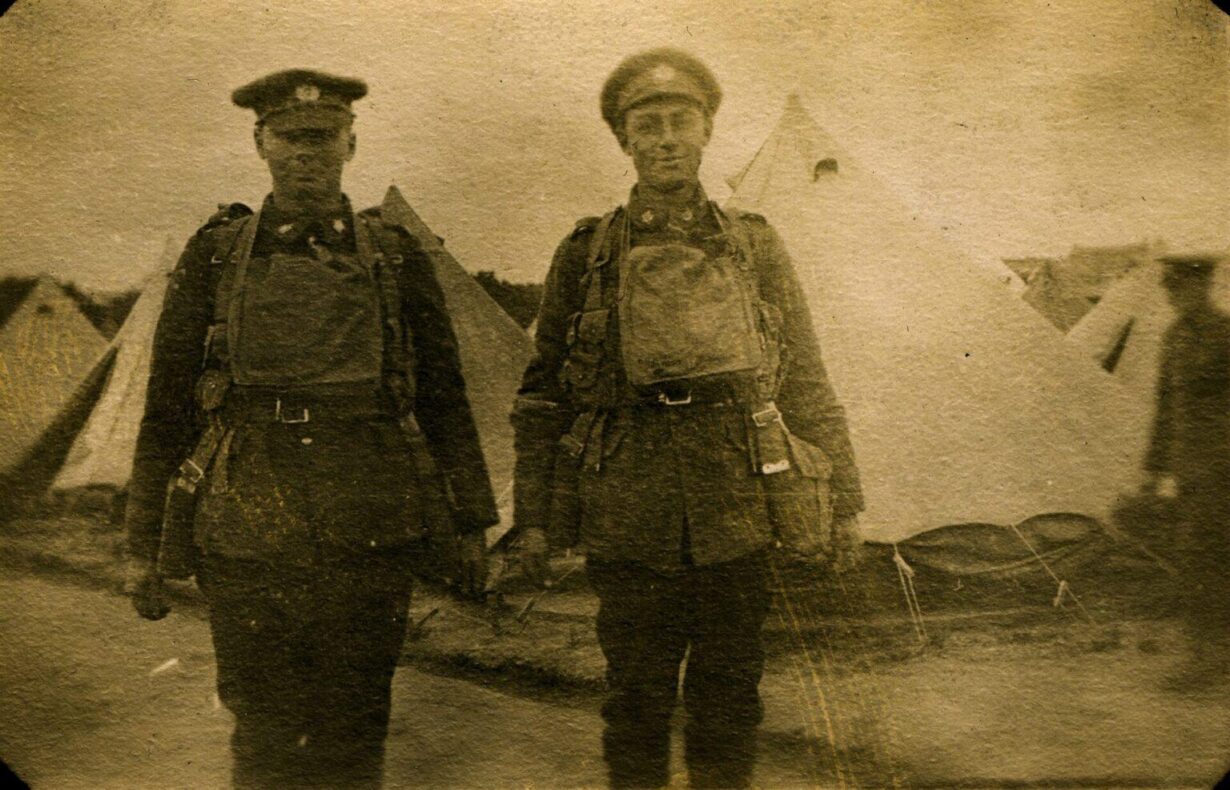
Unfortunately, their time overseas was often spent apart. Len arrived in Europe first and was taken on strength with the 2nd Canadian Engineers Reserve Battalion (CERB) along with over 2000 other soldiers on July 26, 1918. On Aug 6, 1918, the military created 3rd CERB and transferred Len. Cub was taken on strength to the 2nd CERB on August 15, missing Len by nine days. Cub eventually transferred to the 3rd CERB on September 23rd. On October 8th, both men departed for France and arrived at the Canadian Corps Reinforcement Camp at Aubin St. Vaast five days later. Sappers at the camp acted as reinforcements and travelled to different battalions on the front where needed. This would have been a busy time for Len and Cub as their time in France coincides with what scholars now refer to Canada’s 100 Days. The last 100 days of the First World War was an important time for Canadian troops, as they spearheaded many of the offensives that helped to push back the German army. According to Sir Arthur Currie, who commanded the Canadian Corps:
“The success of the Canadian Corps in the final 100 days was due to the fact that they had sufficient engineers to do the engineering work and that in those closing battles we did not employ the infantry in that kind of work.”
Life after war
Both Len and Cub remained in France until early 1919 and likely helped with some aspects of reconstruction after the war. Len went to England to start the process of demobilization in January 1919. Cub however left for Belgium with the 3rd Canadian Infantry Works Company on February 26, 1919. By September, both men were back in Canada and shortly after continued work at Len’s garage. Although the war was over, Len and Cub continued to volunteer with the military, specifically the Princess Louise’s 8th Hussars. Len became Provisional Lieutenant in 1922 but left the Hussars in 1923. Cub continued his service and became a Captain in 1928.
Unfortunately, Len and Cub’s relationship started to change after the war. Upon their return, photographs of the two of them together became sparser and at some point, in the 1920s, the pair split up. Shortly after, in 1931, Len was outed by a group of men and forced to leave Havelock. He eventually settled in St. Hubert, but never returned to Havelock while alive. He passed away of cancer in 1950 and his sister buried him in Havelock with his parents. As for Cub, he married Rita Cameron, a nurse from Moncton, in 1940. Shortly after, Cub joined the Provost Corps as a military policeman in the Second World War. Working at a prison in Scotland, he eventually became a lance corporal. After the war, Cub settled back in New Brunswick and passed away in Moncton in 1965.
Although Len and Cub’s relationship did not last, their story is one of only a few known examples of a 2SLGBTQ+ couple who served in the First World War. Although there were certainly other 2SLGBTQ+ individuals who served in the Canadian Expeditionary Force, an unaccepting society prevented many of these individuals to speak freely about who they were. As a result, many of their stories have been lost to time. However, the resurfacing of Len and Cub’s story after 100 years provides hope that historical research may uncover more stories in time.
Article written by Anthony Badame for Je Me Souviens.
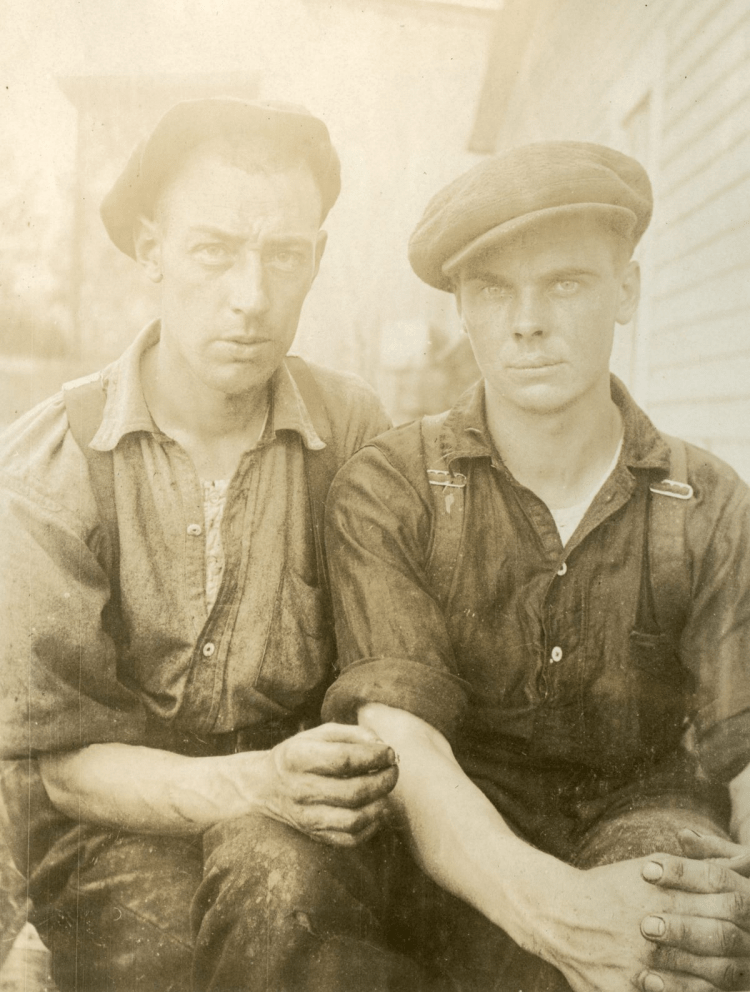
Sources:
To Learn more about Len and Cub:
- “Hidden love of Havelock men documented in early 20th-century photographs“, CBC.
- Meredith J. Batt et Dusty Green, Len and Cub: A Queer History, Fredericton, Goose Lane, 2022, 192 p.
Additional Sources:
- “2SLGBTQ+ Persecution in the First World War: The Untold History of the Canadian Expeditionary Force“, Le Fonds Purge LGBT/LGBT Purge Fund.
- Brian Pascas, « Bridging the Gap: Canadian Engineer Operations at Canal du Nord–Bourlon Wood, 1918 », Canadian Military History, vol. 28, no. 1, 2019, pp. 1-33.

